Skin is one of the most important organs. It shapes our appearance, provides sensation of touch, controls temperature and protects against infections. However, rough, thickened, flaky, itchy or painfully dry skin loses its ability to function properly - receptors become less sensitive, the risks of premature aging and sun damage increase, and the threat of infection increases. Effective solutions are usually very affordable and based on a daily skin care routine that is specific to dry skin.
Signs of excessive dry skin
Dry skin is the main cause of skin diseases; more than 40% of visits to dermatologists are related to dry skin. Dryness can occur anywhere on the body, but it most often occurs on the arms, legs, knees and elbows, and face because these areas are the most vulnerable. Dry facial skin can be a factor in premature aging.
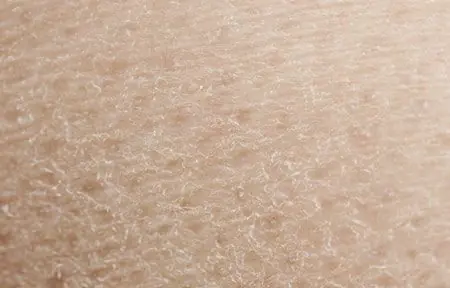
Dry skin is unable to regulate its hydration. 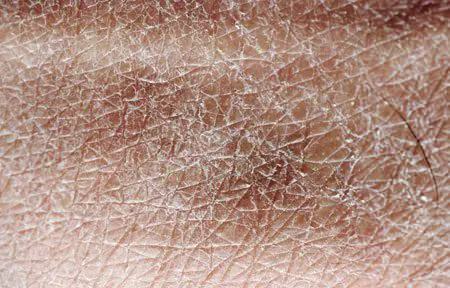
Internal and external factors can impair the skin's ability to hydrate and lead to excessively dry skin
When skin becomes over-dried, it can become very hard, flaky, flaky, very itchy and painful, even very rough and cracked. However, it is not always obvious that dryness is the cause of these skin problems, depending on the degree of dryness and the area of the body affected.
- Moderately dry skin
At first, dryness can be noticed in the form of slight compaction or slight roughness. - Dry skin
If the skin continues to lose moisture, it becomes rougher and may take on a cracked or rough appearance, possibly itching. - Excessively dry skin
If such dryness remains untreated or left untreated, or is ineffective, the skin can become extremely tight, rough and cracked. At this stage, the itching can also become severe and painful.
Areas of the body affected by dry skin
Dryness often appears on the skin of the legs and thighs. Dry skin on the feet is especially common, and often results in cracked heels, which, when severely affected, are associated with pain and inflammation.
However, the dryness associated with washing with strong detergents can affect the entire body equally. Washing your hands too often also tends to cause dry skin.
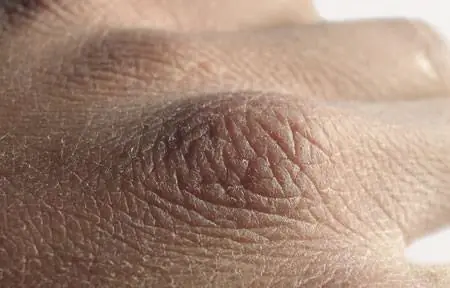
If you wash your hands too often, they can develop dry skin.
Sensitive skin
Dry skin on the body is often quite sensitive, but sensitivity is not always caused by dryness. Some people's skin is naturally very sensitive, even if it is well moisturized. In any case, it is important to avoid skin care products that contain irritating ingredients such as fragrances and dyes. Always make sure the product has been dermatologically tested on sensitive skin.
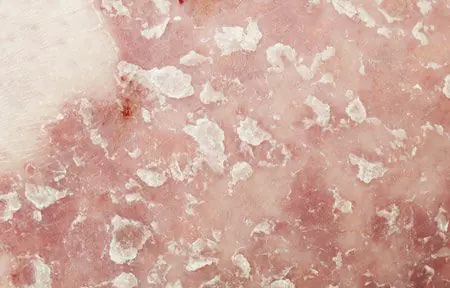
Dry skin due to illness
With conditions such as psoriasis or atopic dermatitis, the skin may appear red, flaky, and itchy.
Dry skin can also be associated with certain medical conditions:
- Xerosis is the medical term for dry skin. It comes from the Greek: “xero” means “dry” and “osis” means “disease”.
- Atopic dermatitis and psoriasis are also associated with dryness, although inflammatory processes underlie these diseases. As a rule, the skin affected by them appears reddened, peeling and very itchy.
- Metabolic diseases such as diabetes and kidney disease can also increase your risk of dry skin.
Main causes of dry skin
There are many reasons and factors that cause dry skin on the body: from environmental exposure and improper skin care to diseases such as psoriasis and atopic dermatitis. The skin acts as a barrier to the body, but this means that it is exposed to both external and internal influences.
- External factors cause disruption of the skin's function as a natural barrier, which leads to increased moisture loss through the skin.
- Violation of the skin's surface barrier by washing away the natural layer of lipids makes it impossible to retain moisture, and the rate of moisture loss increases.
- Finally, when dryness spreads to the lower layers of the skin, the transport of water through the buried tissues is disrupted, as the functioning of important hydration channels is disrupted.

A deficiency of natural humectant factors (HMFs), which bind moisture, leads to dehydration of the upper layers of the skin.
External factors that contribute to dryness
The main external causes of the process described above are environmental factors and skin care:
- Excessive exposure to ultraviolet rays can lead to skin aging and, as a result, dryness.
- It is recommended to limit the bath time and reduce the water temperature, as prolonged baths can lead to evaporation of moisture.
- Since some medications can cause dry skin, it is recommended to consult a doctor.
External environment
- Harsh weather conditions - heat, cold and dry air - destroy the protective function of the skin.
- Seasonal Changes – Dry skin symptoms often worsen in winter or summer.
- Ultraviolet (UV) rays from the sun can speed up the aging of your skin, and as you age, your skin becomes more prone to dryness.
Skin care
- Frequent washing or long, hot baths or showers remove the layer of lipids that form the skin's protective barrier.
- Inappropriate skin care – It is important to follow the instructions and use products that are suitable for dry skin. It is especially important not to use strong soaps, which strip away the skin's natural lipids.
Taking medications
Dry skin occurs as a side effect of many medications. Common medications that have this side effect include diuretics to control blood pressure, which work by increasing the amount of water that is lost from the body through urine, as well as some antibiotics and oral acne medications. Always consult your doctor or pharmacist if you
Genetic influences
Heredity also affects the moisture balance in the skin. Some people have oily skin, others have dry skin, and these skin types are inherited, although a person will not necessarily have the same skin type that their parents had. Skin diseases such as atopic dermatitis, psoriasis, diabetes mellitus and ichthyosis often have a genetic basis.
Hormonal influences
Changes in the concentrations of certain hormones, especially estrogen and testosterone, can affect skin moisture and lipid levels. This is especially noticeable after menopause, when the skin becomes dry due to decreased estrogen levels.
Dry skin can also develop during pregnancy due to hormonal changes as well as additional body fluid requirements.
Nutrition
Like any other organ, the skin requires a number of important nutrients to function properly. Among them are unsaturated fatty acids and vitamins. A lack of any of these can contribute to the development of dry skin.
Age
With age, the number of sebaceous and sweat glands in the skin decreases, which leads to a decrease in the ability to synthesize sweat and lipids. The skin's water content and ability to retain moisture also decreases. These factors lead to dryness, which in turn causes aging of the skin and the formation of fine lines and wrinkles. Learn more about age-related dryness.
Factors that cause dry skin
In addition to the main causes of dry skin on the body, there are several other factors that also affect the degree of dry skin. Understanding this will help you avoid them and thereby reduce their impact.
- The best time to moisturize is when the skin is clean and slightly damp, such as after a bath or shower.
- Dry skin needs special sunscreens without any irritating perfumes or dyes.
- Consistent use of protective gloves and hand cream can help some professions, such as doctors or hairdressers.

Lack of effective treatment
If dry skin is not treated quickly, the degree of dryness may increase and the hydration system in the deeper layers of the skin may be compromised. In such situations, it is necessary to use a moisturizer designed to solve this problem.
The influence of sun rays
While protecting dry skin from sun damage, it is important that the sunscreen also replenishes the lack of moisturizing factors, in addition to an appropriate sun protection factor (SPF). It is also important that sunscreen, like any other skin care product used on dry skin, does not contain irritating perfumes or dyes, as dry skin, especially on the face, is more prone to irritation than normal skin.
Occupational hazards
Some professions require working in environments that may increase the risk of dry skin. These are typically occupations that involve exposure to dry skin factors, such as working in hot or cold conditions (farmer/fisherman), or jobs that involve the use of detergents (doctor/nurse/hairdresser), or working with chemicals (mechanic/ cleaner).
Dehydration
The skin receives moisture from the body and therefore depends on the water balance in the body. When dehydrated, it reduces the supply of moisture to the skin, which slows down the natural movement of water through the skin, which can contribute to dryness. Older people are prone to dehydration because the feeling of thirst decreases with age.
Smoking
Cigarettes contain many toxins, including nicotine, which can reduce blood flow. This leads to a decrease in the metabolic rate in the skin. This means that the processes of premature aging and drying can begin in it.
Caring for dry body skin
Dry skin is caused by a violation of the skin's barrier function, which leads to loss of moisture and a decrease in the ability to retain water due to a deficiency of moisturizing factors. Thus, dry skin requires daily care that does not cause further deterioration of the skin barrier and restores the lack of natural moisturizing factors.
Dry and excessively dry skin, as well as dry skin associated with diabetes or psoriasis, require appropriate products depending on the degree of dryness, but atopic dermatitis requires special products for the daily skin care of infants and young children. When choosing a skin care product for children, always check the age requirements.
Recommendations for caring for dry skin
Cleansing dry body skin. Most often, skin becomes dry due to damage to the skin's surface barrier, so it is important that the cleanser is gentle enough not to strip away the skin's natural protective barrier. Additional natural moisturizing factors such as urea will also help restore the skin's moisture balance.
Moisturizing dry body skin. The first requirement for moisturizers for dry skin is to restore the moisture balance in the upper layers of the skin. Substances called “natural moisturizing factors” (NMFs), such as urea and lactic acid, retain moisture in the stratum corneum or upper layer of the skin. The minimum recommended concentration of urea, even for moderately dry skin, is 5%. Excessively dry skin typically requires a higher concentration of urea and other moisturizing factors.

Instead of wiping wet skin with a towel, pat it dry and apply cream or lotion immediately after.
It is important to follow the instructions and use products that are suitable for dry skin.
Dry, rough, and thickened skin can be caused by disturbances in the three main mechanisms of moisture control: damage to the surface barrier due to insufficient skin lipids, dehydration of the stratum corneum due to the lack of natural moisturizing factors, and poor distribution of moisture in the lower layers of the skin.
Protecting dry body skin from sun radiation
When going outside, you should reduce your exposure by wearing clothing that covers all parts of your body and using sunscreen. In addition, it is important that sunscreens also contain moisturizing factors. Sunscreens for dry skin should not contain irritating perfumes or dyes because dry skin is sensitive to irritation.
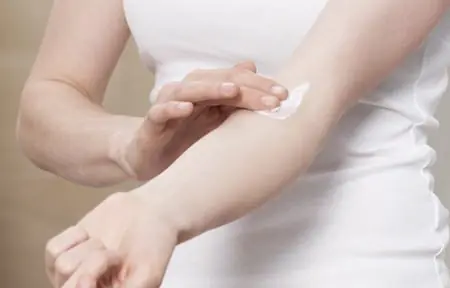
A moisturizer suitable for dry skin should be frequently applied to the affected area.
Avoiding factors that contribute to dryness
In addition to good daily cleansing and moisturizing, it is important to avoid factors that contribute to the development of dry skin. This will help alleviate the problem of dry skin and reduce the need for treatment:
- Avoid dry air by spending less time outside in hot, dry or cold weather and using humidifiers when the heating is on indoors.
- Reduce your time in hot water by taking quick, warm showers instead of long, hot baths.
- Wear gloves when washing dishes to avoid exposure to hot water and harsh detergents.
- Wear clothes made from natural materials such as cotton and silk, which are gentle on your skin. Wool is also a natural material, but can irritate dry skin and should be avoided.
- Try to use laundry detergents without dyes or fragrances to avoid irritation.
- Make sure you drink enough water - especially for older people.
In most cases, dry spots on the skin are fungal, less often allergic or infectious. Much will depend on the accompanying symptoms, which may manifest themselves in the form of peeling, weeping, severe itching and pain. They are more common in people aged 20-45, less common in children. The spots can be localized on any area of the skin, from the face to the groin area. The size, depending on the disease, ranges from a small coin to a large saucer. Dry to the touch, floury peeling in the form of flakes may be observed.
Possible diseases
Very often, round dry spots appear on the face and chest area after severe stress or recent experiences. They are pink or red in color and are accompanied by slight itching. They differ in their sudden appearance and disappearance (within 24 hours). In other cases, we are talking about diseases of a different nature:
- Psoriasis. Dermatosis with a completely unknown etiology, occurring in people of all ages. It is of hereditary nature. Characteristic differences are the appearance of dry, flaky spots on the skin, not accompanied by any subjective sensations. At the initial stage, the size of the plaques does not exceed 1-2 cm. The surface is rough to the touch; when pressed, exfoliation of the epidermis is observed, which resembles flakes. As the process progresses, their number and size can increase significantly. Common locations are the scalp, elbows, knees, lower legs, back, and less commonly the stomach and groin area. Exacerbations of psoriasis are observed after severe stress or prolonged experiences.
- Contact dermatitis. An allergic reaction at the initial stage may appear in the form of dry spots on the skin that are red or pink. The average size of the rash is no larger than a coin. There is a subjective sensation in the form of itching of varying intensity and accompanying symptoms in the form of swelling, redness, blisters, blisters and small red dots that appear during the process. It can appear on any area of the skin that has been in contact with the allergen. Allergic reactions are most severe in the groin and genital area.
- Tinea versicolor. A common fungal skin disease that manifests itself in the form of dry spots of various colors. Most often, tinea versicolor can be identified by brown spots on the body, less often it takes on a pink or flesh-colored color. Not accompanied by any subjective sensations (in most cases). The size of the plaques is 1-2 cm, rarely larger. The number of rashes in some cases can reach 7-10 pieces. Most often they are localized on the neck, chest, back and abdomen. As the process progresses, it can spread to the groin area. An exacerbation can be triggered by a sharp decrease in immunity (in girls this is usually pregnancy), hypothermia, or a recent viral disease.
- Pityriasis rosea. Another dermatosis with a controversial etiology, which cannot reliably indicate the cause of its occurrence. Some experts say that pityriasis rosea is a “sensor” of reduced immunity. There is also a connection with the seasons - 80% of exacerbations occur in spring and autumn. It usually appears as one or several round dry spots on the skin of pink or light red color. Localization – face, neck, chest, abdomen, back, less often groin and legs. Peeling of the lesions is often observed, in isolated cases there is slight itching.
- Eczema. A very common chronic skin disease, which is characterized by an acute onset, a long course and seasonal exacerbations. Eczema only at the initial stage can manifest itself in the form of dry spots on the body; as the process progresses, vesicles, blisters, weeping, crusts and scales are almost always added. Refers to diseases of a neuro-allergic nature. It has many forms, which are characterized by their own symptoms and localization of rashes. Each form is united by severe itching of the skin in the affected area.
Less commonly, dry spots on the skin appear as a consequence of diseases of the internal organs, namely problems with the gastrointestinal tract and digestive system. Men and women over 50 years of age are at risk.
Dry spots on skin photo
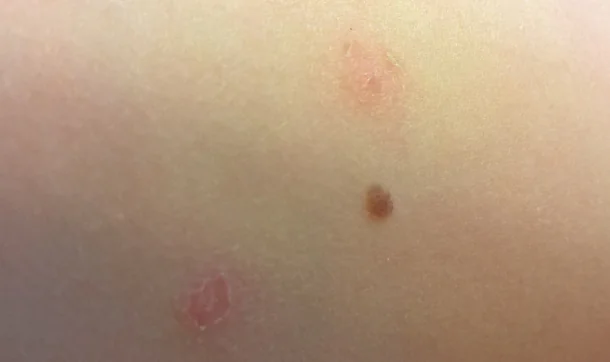
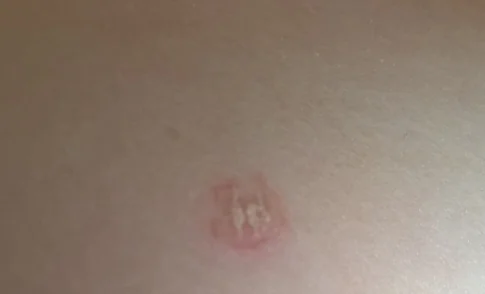
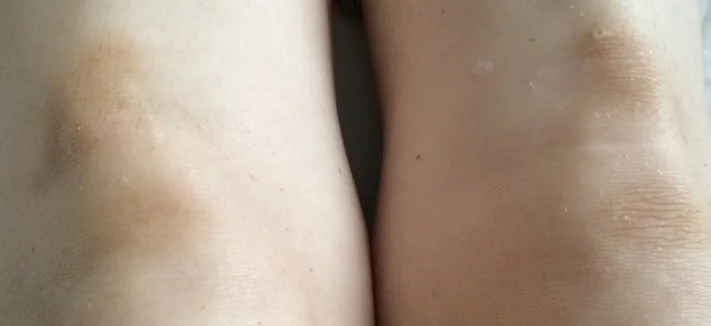
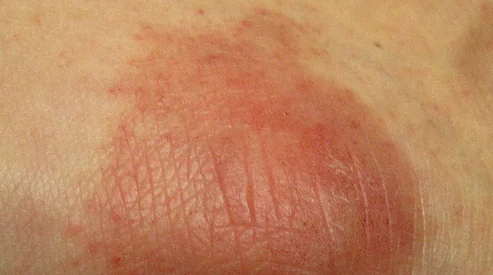
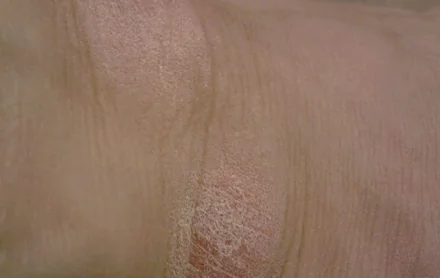
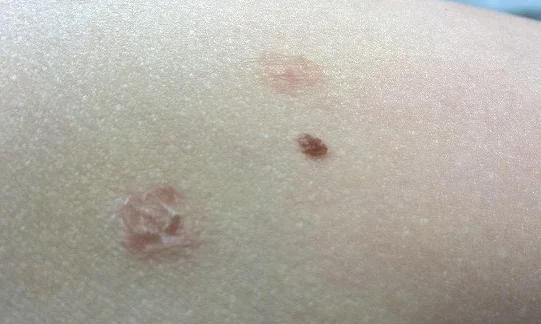
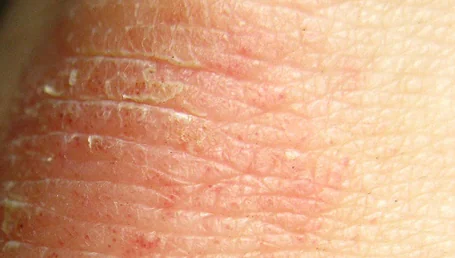
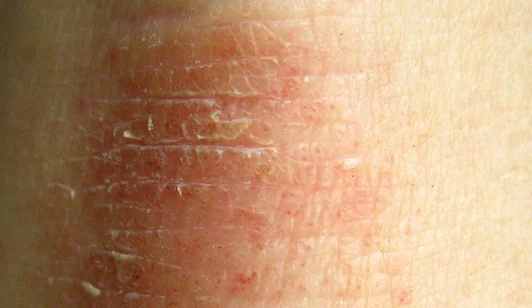
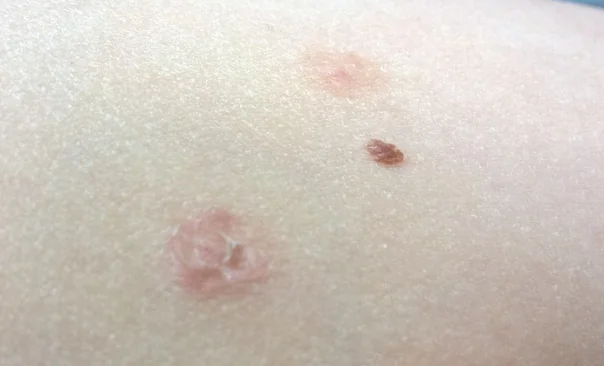
Diagnosis and treatment
According to statistics, dry spots on human skin in 30% of cases appear after severe stress and spontaneously disappear within a few hours/days. Along with their appearance, there may be a slight itching. The most common locations are open areas of the body (face, neck, chest).
If the rash persists for more than 2-3 days, then it is recommended not to delay visiting a dermatologist. Even if you have pityriasis rosea, which goes away on its own (in 90% of cases) within 4-6 weeks, after diagnosis you will have peace of mind and will rule out serious diseases. The same recommendations with pityriasis versicolor. Only here it is better not to hope for self-cure and undergo an appropriate course of treatment, which usually includes the following drugs:
- Clotrimazole in a visible ointment (externally 2 times a day for 7-10 days);
- Boric alcohol (wiping the lesions 2 times a day for 10 days);
- Nizoral in the form of shampoo;
- Dermazol in the form of shampoo;
- Sebozol in the form of shampoo;
- Fluconazole in capsule form (prescribed much less frequently in advanced cases).
Also, for tinea versicolor, in consultation with the doctor, 5-7 solarium sessions can be prescribed, which will get rid of the pigmentation that remains at the site of the lesions.
Treatment of psoriasis and eczema should be carried out under the strict supervision of a doctor, who selects not only medications, but also adjusts the patient’s diet and lifestyle. Here, salt baths based on the Dead Sea and visiting seaside resorts 2-3 times a year (especially during periods of exacerbation) have proven themselves to be excellent. The doctor should also inform that psoriasis is currently an incurable disease, so that the patient does not “fall” for the tricks of pharmacists who groundlessly claim that their creams and ointments can cure the disease once and for all.
Clear skin is every person's dream. But often people notice that dry patches have appeared on their skin. They differ in color and size. They can be localized on the face, arms, neck, torso. Dry patches on the skin form for two reasons. These may be external factors: improper skin care, exposure to sunlight, or internal causes: organ diseases, stress, fungal diseases.
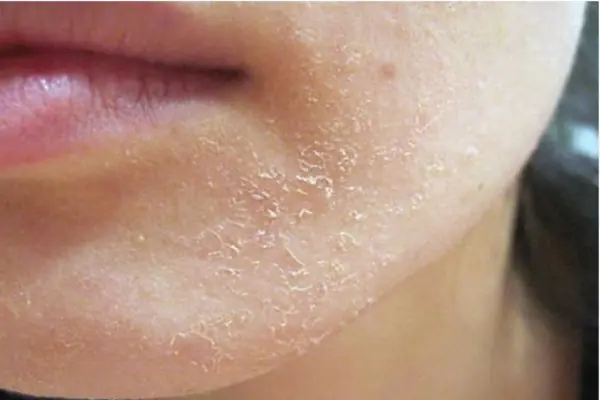
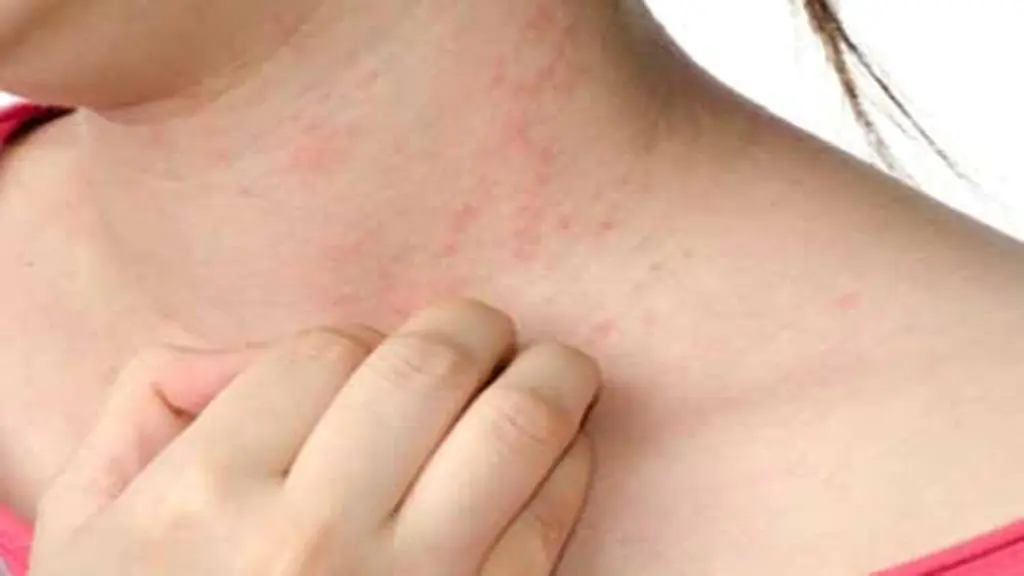
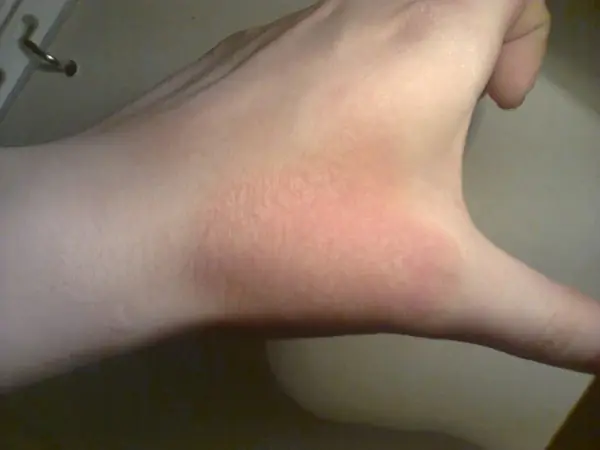
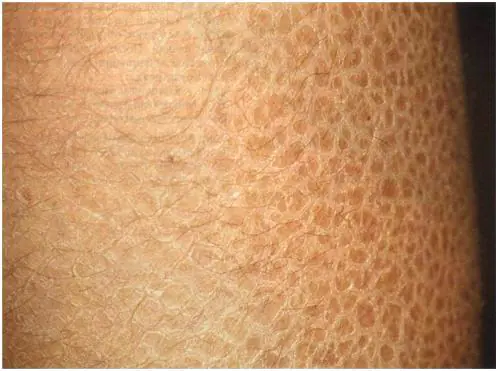
Why do dry spots appear?
The upper layer of the dermis is sensitive to the environment. Spots can appear due to external factors: improper skin care, use of inappropriate cosmetics, reaction to sunlight, temperature changes, strong wind.
Skin defects also form as a result of more serious, internal causes. Perhaps they signal diseases of the skin or organs. These factors include the following:
- Fungal infections - pathogens penetrate the skin and begin to actively multiply, causing spots, cracks, and eczema to form on the skin.
- Stressful situations - moral overstrain undermines the functioning of the nervous system. This provokes various diseases, the cardiovascular, digestive and other systems suffer. Rashes form on the skin.
- Dehydration – with a lack of water in the diet, all organs, including the skin, suffer. For this reason, dry spots usually appear on the skin of infants.
- Malfunctions in the functioning of internal organs - dry neoplasms appear as a result of improper functioning of the liver and gall bladder. If the removal of harmful substances from the body is impaired, then enzymes accumulate in the body, resulting in spots. The disease can develop into dermatitis. Usually the disease is observed in adults, less often in children.
- Lack of vitamins - poor and unbalanced nutrition, along with harsh climatic conditions, worsens the condition of the skin. Dry spots appear on the body, but they represent only a superficial defect. Stains are easily removed. It is necessary to take a course of vitamins and regularly lubricate the skin with nourishing, moisturizing creams.
White dry spots on the body
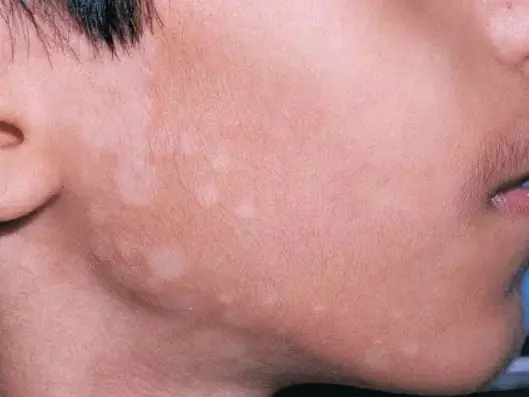
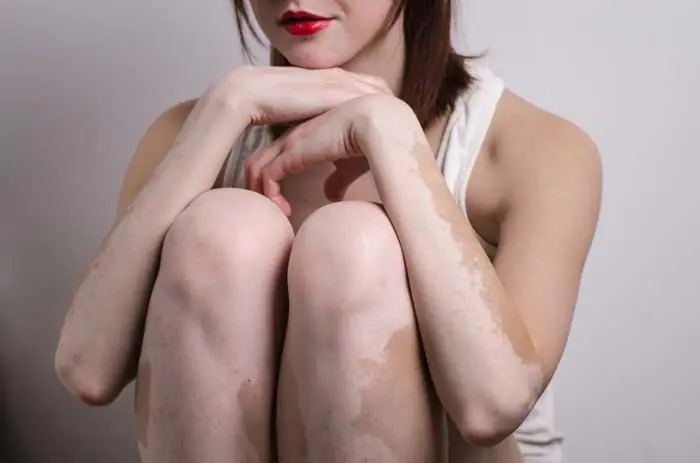
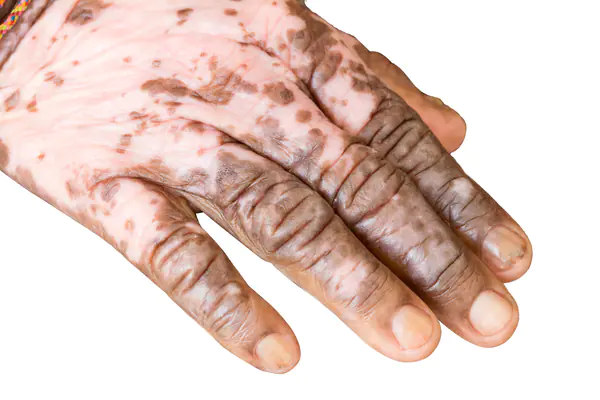
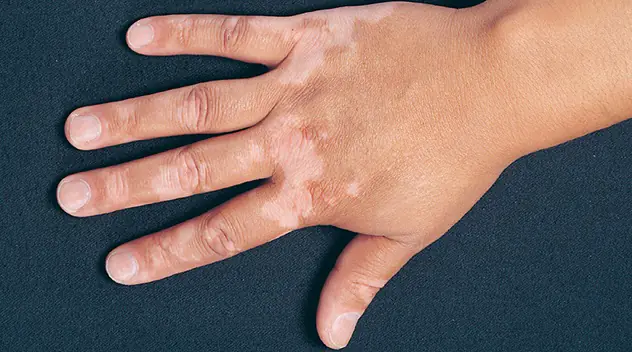
Whitish formations appear because the production of melatonin in different areas of the skin is disrupted. The main reasons include the following:
- Excessive exposure to sunlight - ultraviolet radiation has a negative effect on the skin. Over time, the skin begins to dry out, and the surface layers of the epidermis peel off, forming spots.
- Vitiligo is a skin disease that is still not fully understood and cannot be cured. With it, white spots appear on the skin, which gradually grow. The formations do not itch, do not peel, and do not bother a person in any way, but they cause psychological discomfort, especially when concentrated on visible parts of the body.
- Often, white spots are formed as a result of fungal diseases (including vesicular lichen). The defect has clear boundaries, a dry spot on the skin peels off, but does not hurt.
Red dry patches on the skin
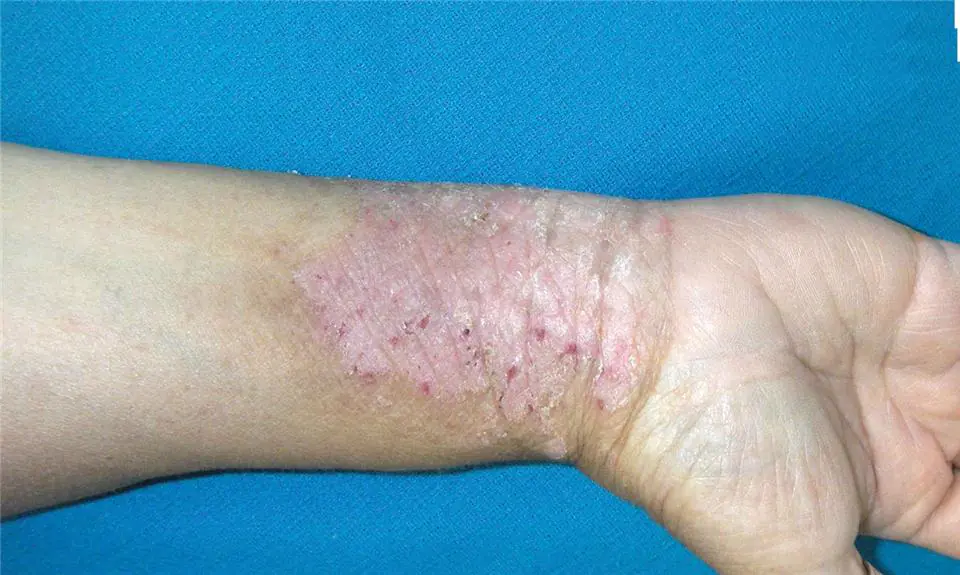
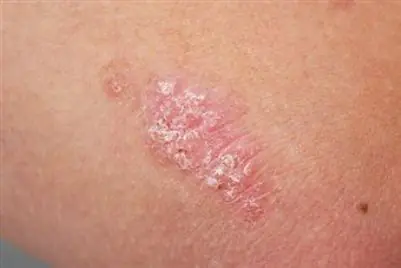
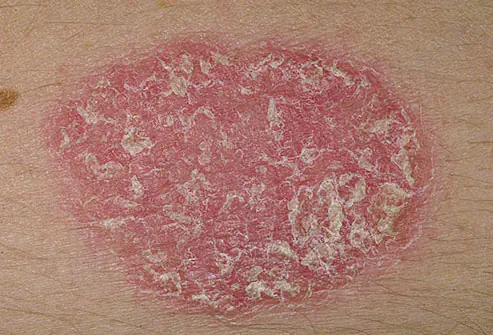
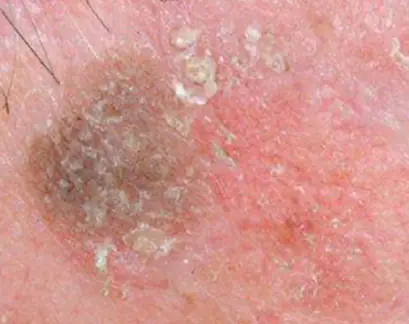
Such defects occur most often. They indicate that the body is affected by irritants. Most often, spots appear due to an allergic reaction. They are accompanied by itching, the skin becomes inflamed and irritated.
Sometimes red detachments indicate psoriasis or lichen planus. With psoriasis, red, dry spots form on the skin of the arms, neck, face, legs, and back. They itch, flake and cause a lot of discomfort.
Sensitive skin reacts to temperature changes, strong winds and cold. Often, after a long stay in such weather conditions, the skin becomes dehydrated and dry patches appear on it.
Dark dry spots on the body
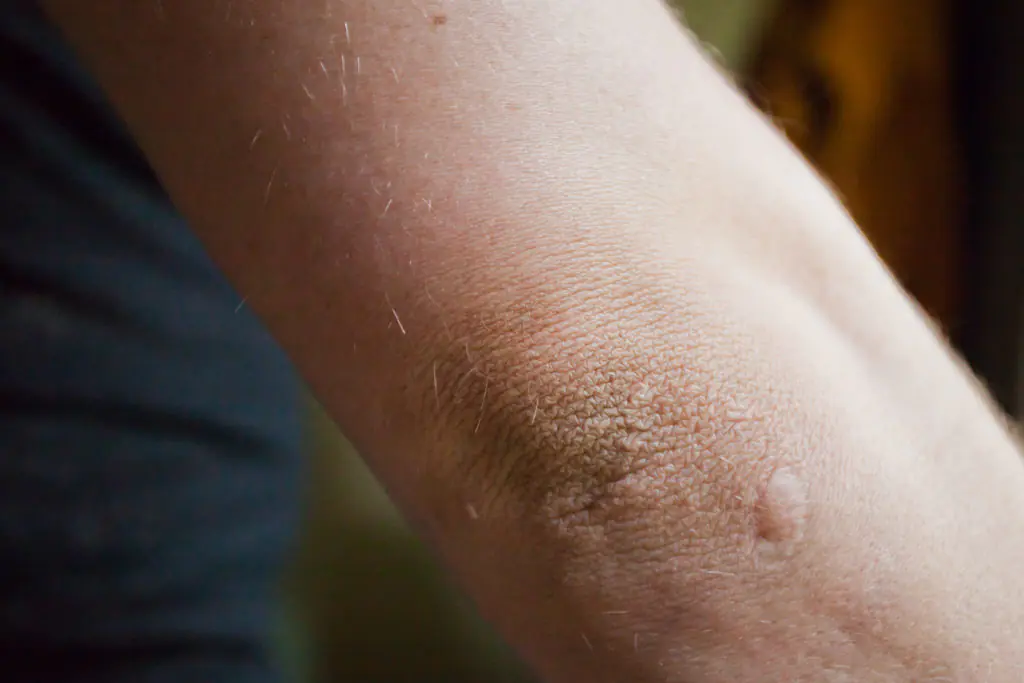
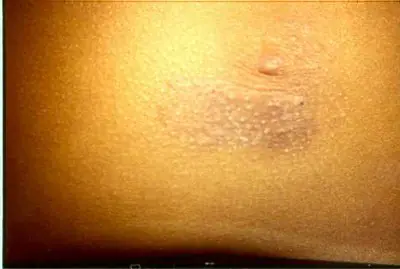
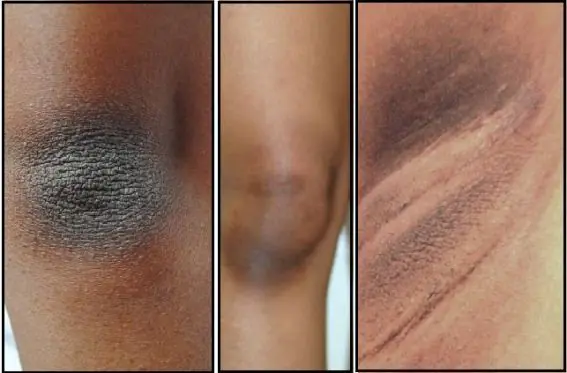
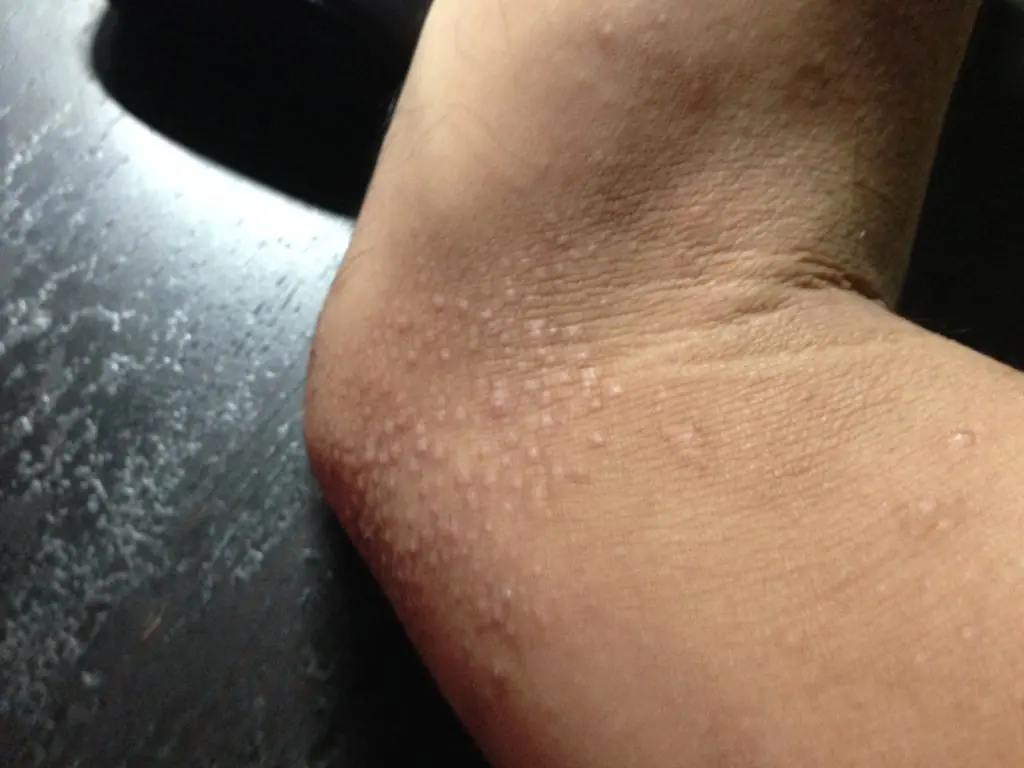
Dark spots may not be dangerous, but they can also be harbingers of cancer. They occur in the following cases:
- Hormonal changes in the body, pigmentation increases in pregnant women, during menopause. As soon as the body returns to normal, the brown spots on the skin will disappear.
- The presence of a fungal infection - in this case, the spots itch and peel.
- Age-related changes - over time, the skin ages and loses its elasticity. Melanocytes begin to work worse, so dark spots appear on the body.
Drug treatment
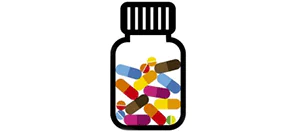
If spots appear, you should seek help from a dermatologist. To make a diagnosis, a visual examination and a description of complaints from the patient’s words is sufficient (for example: is a dry spot on the skin itchy or not, is there any pain or discomfort). If the doctor doubts the diagnosis, clinical studies will be carried out (usually scrapings are taken from the affected areas).
When dry patches occur, doctors prescribe medications from the following categories:
- Antihistamines – reduce tissue swelling and help cope with allergies. In addition to taking medications, allergens should be excluded from the diet or everyday life. Antihistamines include: Claritin, Suprastin, Tavegil, Zodak and Zirtek, etc. (the latter two are approved for use in children).
- Sedatives - if a person is in a constant state of stress, then skin defects will be provoked by nervous overstrain. The patient should visit a neurologist and take a course of tablets: Novo-Passit, Tenoten, Afobazol, Persen. Motherwort tincture and mint tea also help.
- Anti-inflammatory ointments - in cases of severe inflammation, creams with a hormonal component are used. Among them: Triamcinolone, Hydrocortisone, Betamethasone, Flumethasone. Non-hormonal ointments are made based on zinc, tar and salicylic acid. When purchasing, look at the composition of the cream; if it contains these components, then you can buy the product. Bepanten helps children from the first days of life.
- Preparations for the treatment of underlying diseases - if dry spots on the skin of the body, face, hands are caused by a disease of any internal organ, then the underlying disease should be treated. The therapy will be prescribed by the attending physician.
In parallel with treatment, doctors can prescribe hetaprotectors “Essentiale” and “Karsil” in case of impaired functioning of the digestive system. To detoxify the body, use activated carbon or Enterosgel. For severe pain, Nise, Nurofen, and Ketorol are prescribed - non-steroidal anti-inflammatory drugs. If a bacterial infection has joined the spots, the patient is prescribed antibiotics.
If dry spots appear on a child’s skin, then you should not self-medicate. Be sure to contact your pediatrician. He will determine what kind of rash it is and prescribe treatment. In most cases, the body reacts to allergenic foods in this way.
Treatment in a beauty salon
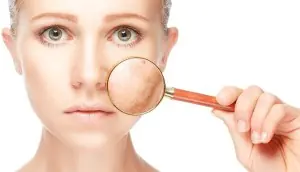
Dry spots caused by external factors can be completely removed at a beauty salon. If the rash is caused by internal diseases or the person has skin diseases (psoriasis, eczema), then cosmetic procedures can only be performed on the recommendation of a doctor.
The main procedures include the following:
- Laser therapy - under the influence of rays, melanin is destroyed, dark and dry brown spots on the skin are destroyed and disappear, while healthy skin cells are not injured. This method is considered the most gentle. For large stains, you will have to do the procedure several times.
- Chemical peeling - dark areas of the skin are exposed to acids (tartaric, citric, malic), pigment spots receive a slight burn, the top layer of the epidermis comes off, and clean skin appears in its place.
- Phototherapy is a medical procedure that is performed for psoriasis, vitiligo, eczema, and fungal diseases. Consists of exposing the affected areas to light rays of different lengths.
Beauty salons can recommend special medicated whitening creams. They are made on the basis of hydroquinone, arbutin, kojic acid, ascorbic acid, etc.
How to treat stains at home
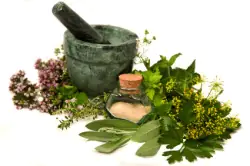
You can alleviate the patient’s condition with folk recipes. But before using them, consult your doctor.
- To relieve inflammatory reactions, you should wash your face with decoctions of medicinal plants. Brew a tablespoon of chamomile or chamomile in a liter of water. Leave for 15 – 20 minutes. Wash your face with the infusion every morning until the spots on your facial skin and inflammation go away.
- A honey mask eliminates dry spots. Melt two tablespoons of honey in a water bath, add a tablespoon of cottage cheese. Grind until smooth, apply to cleansed facial skin. Leave on for thirty minutes and wash off.
- Mix a tablespoon of olive oil and the same amount of honey, mix the ingredients well. Apply to a clean face, rinse after thirty minutes. Then lubricate your skin with moisturizer.
- To alleviate the condition of psoriasis, a special remedy will help. Make a decoction of St. John's wort: a teaspoon of the plant in a glass of boiling water, cook for five minutes over low heat. Dilute dry mustard with broth, add a little butter. Apply to affected areas once a week.
- Alcohol tincture will help reduce inflammation in psoriasis. Take celandine, chamomile and string in equal proportions, add vodka and leave for two days. Treat inflamed areas of skin with tincture several times a week.
- Dry, flaky patches on the skin will gradually disappear if you regularly take baths with medicinal herbs. A bath in which a decoction of the string is added (take twice a week) works great for skin rashes. A bath with bay leaves shows good results. To do this, pour a liter of boiling water over the bay leaf and leave for an hour. Then the infusion is added to the bath. The procedure is repeated once or twice a week, for at least twenty minutes.
How to get rid of dark spots

Masks made from natural products will help remove dry and rough spots on the skin of an adult.
- Sauerkraut juice is suitable for people of all skin types. Soak a gauze pad in cabbage juice, apply to age spots and wait 10 - 15 minutes. Then rinse off.
- Dissolve mustard in warm water to a paste and apply to face. Wash off when the mustard begins to burn your skin. The mask should not be used for dry skin, people who have dilated blood vessels on the face or have excess hair.
- Dry spots on the skin of the face can be lightened with a mask of radish and tomato. Grate the vegetable on a fine grater, apply the paste to problem areas, rinse off after 10 - 15 minutes. Then apply nourishing cream.
Conclusion
Doctors warn! Shocking statistics - it has been established that more than 74% of skin diseases are a sign of parasite infection (Accarida, Giardia, Toxocara). Worms cause enormous harm to the body, and the first to suffer is our immune system, which should protect the body from various diseases. The head of the Institute of Parasitology shared the secret of how to quickly get rid of them and cleanse your skin, it turns out that’s enough. Read more .
Dry spots on the skin of the hands, face, torso, and legs can appear for various reasons. Sometimes they are harmless: excessive exposure to sunlight, improper skin care, or an allergic reaction. But in some cases, dry spots indicate a malfunction of the body. If rashes appear, you should consult a dermatologist.



